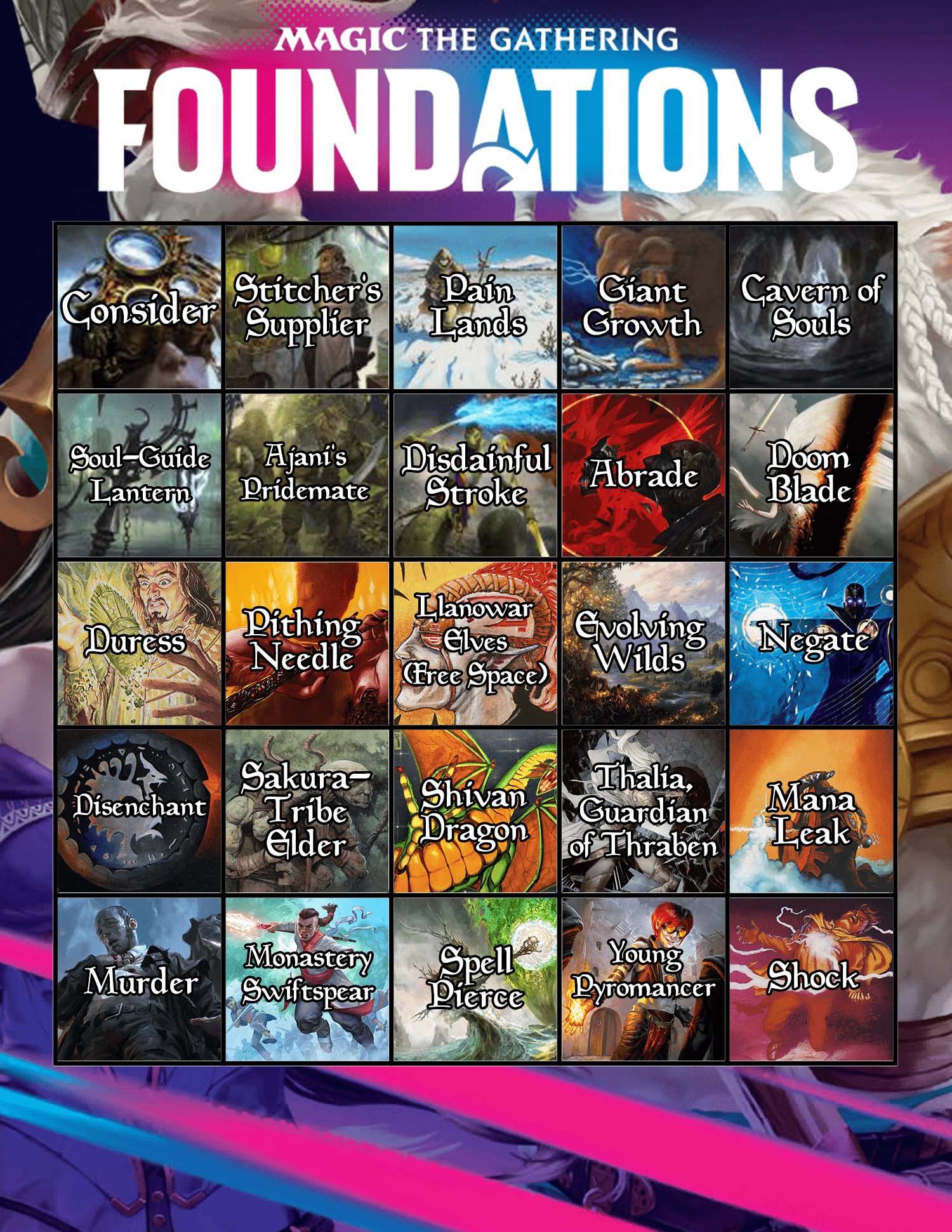We’re at the height of the prerelease season and we’ve received a multitude of cards to be excited about brewing around. The first one of note is Fear of Missing Out:
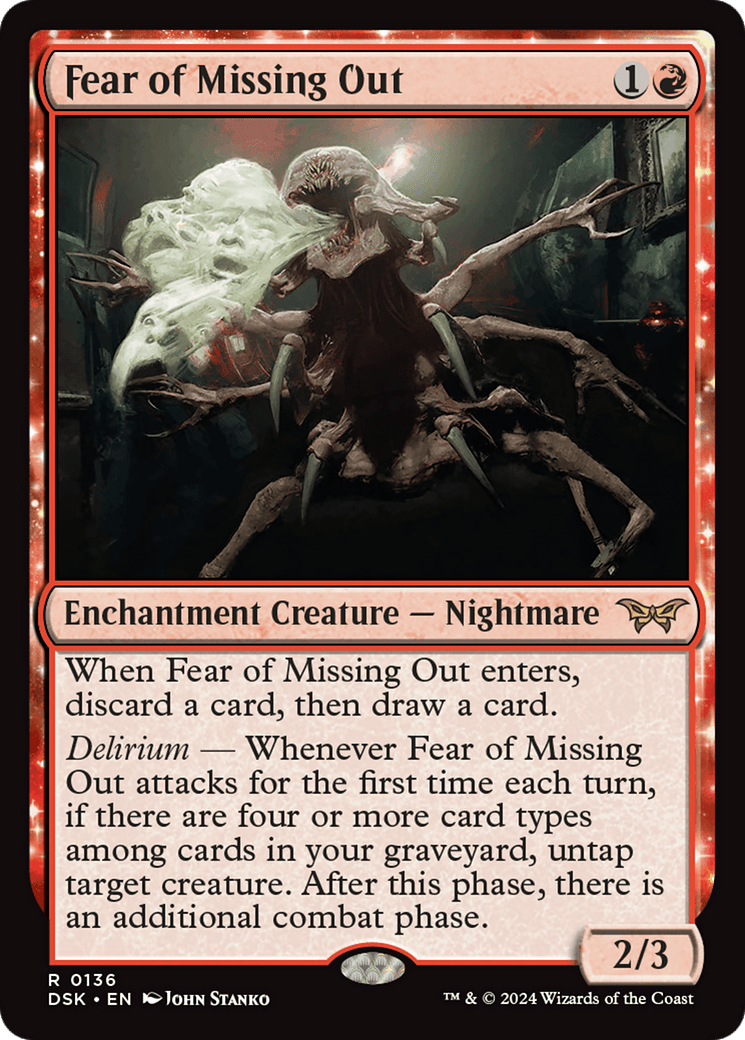
Fear of Missing Out (FOMO) is an insanely potent effect on a body with decent stats and conditionality that isn’t very difficult to turn on. It discards a card to fuel itself while supporting its own conditionality by having two card types for reaching Delirium as quickly as possible. I think this will find homes in Jund and Grixis midrange builds, and maybe it could surprise me and find a home even in Mono Red. Mono Red has been trending towards creature builds with Hired Claw and Sunspine Lynx, and this adds to that nicely. Currently, we typically see Mono Red running creatures, instants, and lands, but we could add some new card types. Some Gruul decks with Innkeeper’s Talent have been popping up and Demonic Ruckus is a great option for an additional enchantment to run on top of FOMO. Urabrask’s Forge mainboard is also on the rise due to the abundance of Caretaker’s Talent control decks, and it fits extremely well with FOMO’s double combat triggers. It shouldn’t be difficult to find a sorcery that fits your pleasure. Other cards that I would look to play this with are Inti, Senechal of the Sun, Liliana of the Veil, Fabled Passage, The Infamous Cruelclaw, and Glissa Sunslayer. I’m hopeful that FOMO enables the fringe Rakdos Descend lists to return from their slumber after the rotation of my beloved Ob Nixilis, The Adversary.
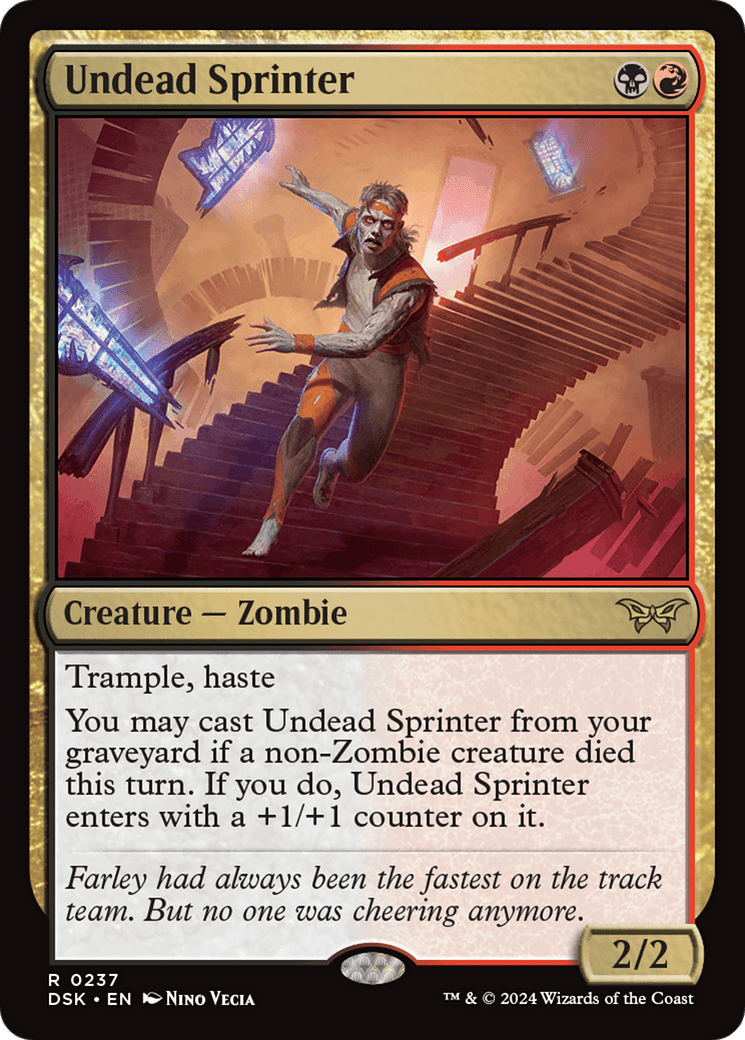
Undead Sprinter is an amazing card at first, second, and third look. While there is exile removal in Sunfall, the recurring threat of a 2 mana 3/3 haste trampler is one that can’t be overlooked. Whether you’re running it as a 2-drop beater, repetitive sacrifice fodder, or incidental self-mill value, Undead Sprinter provides a lot of power behind an unassuming creature. This, like FOMO, pairs well with Urabrask’s Forge. They’re forced to let the Horror through, or else you get to recur Undead Sprinter. It’s useful with discard cards like Inti, Senechal of the Sun, or Bitter Triumph, which just immediately lets you cast it from the graveyard as a 3/3 if you pitch it (assuming you aren’t killing a zombie with Bitter Triumph for whatever reason). A classic feeling Jund card, despite the eye-roll-inducing, out-of-place pop culture reference. I mean seriously, Nashi is crying over having to let go of his dead mother and dragging everyone who loves him into this death trap, and we have cheerleaders and zombie jocks.
The land cycle of Duskmourn is extremely unique and pushes the envelope in a direction I never expected, which is entering untapped unconditionally. In this set, we get the allied cycle:
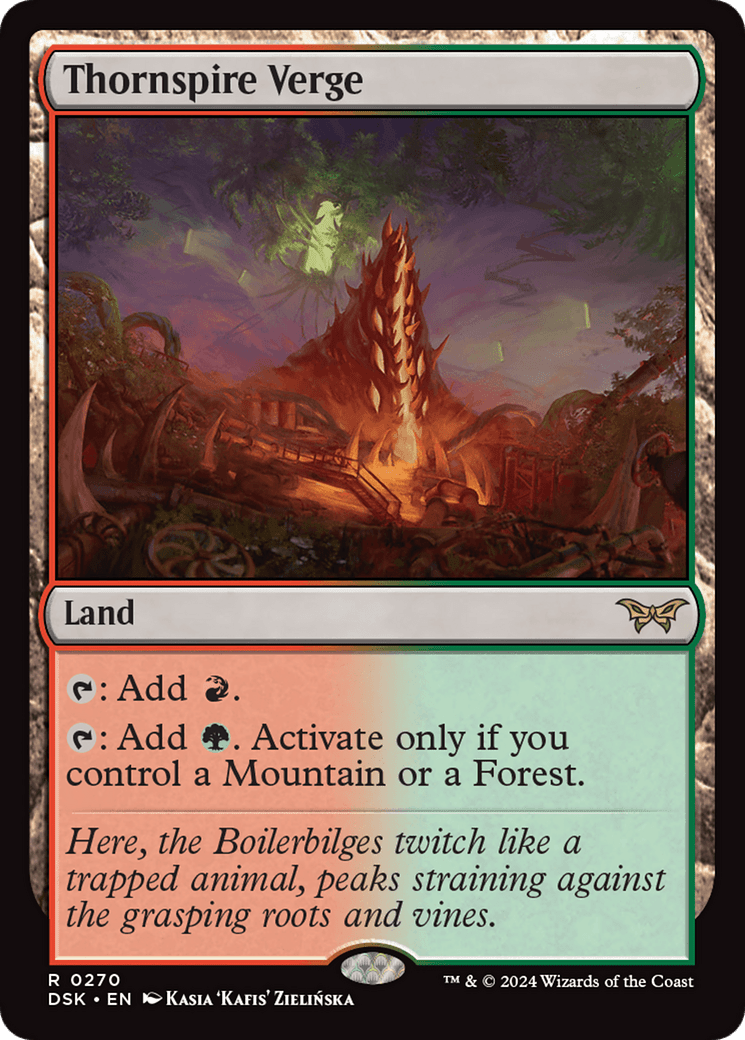
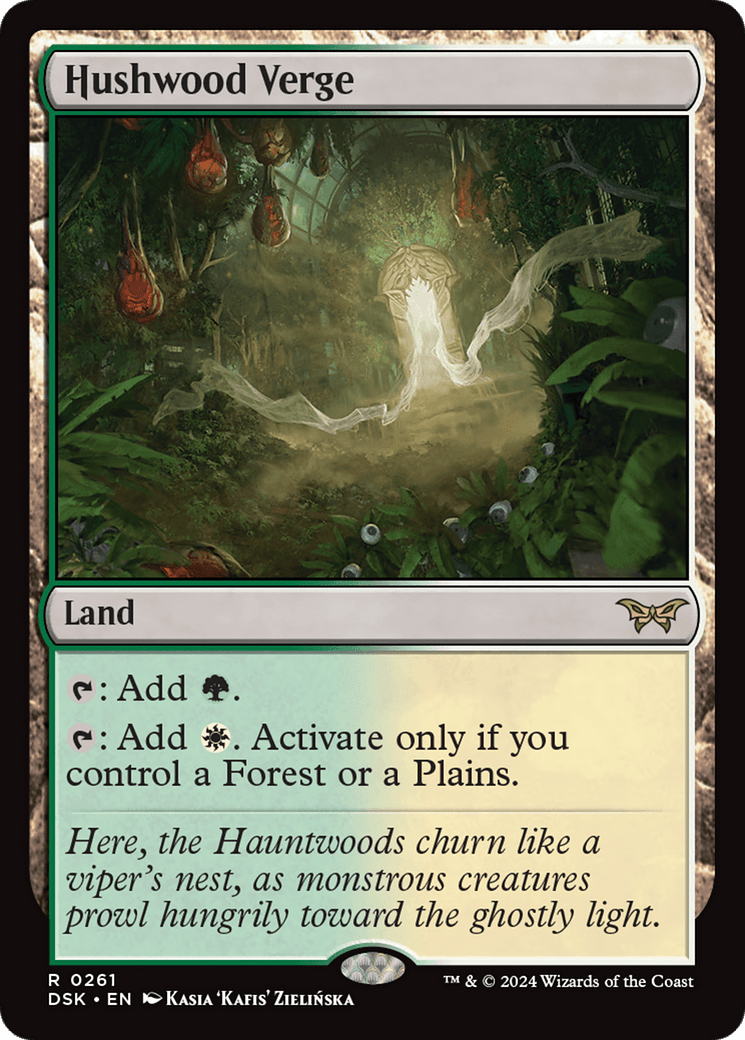
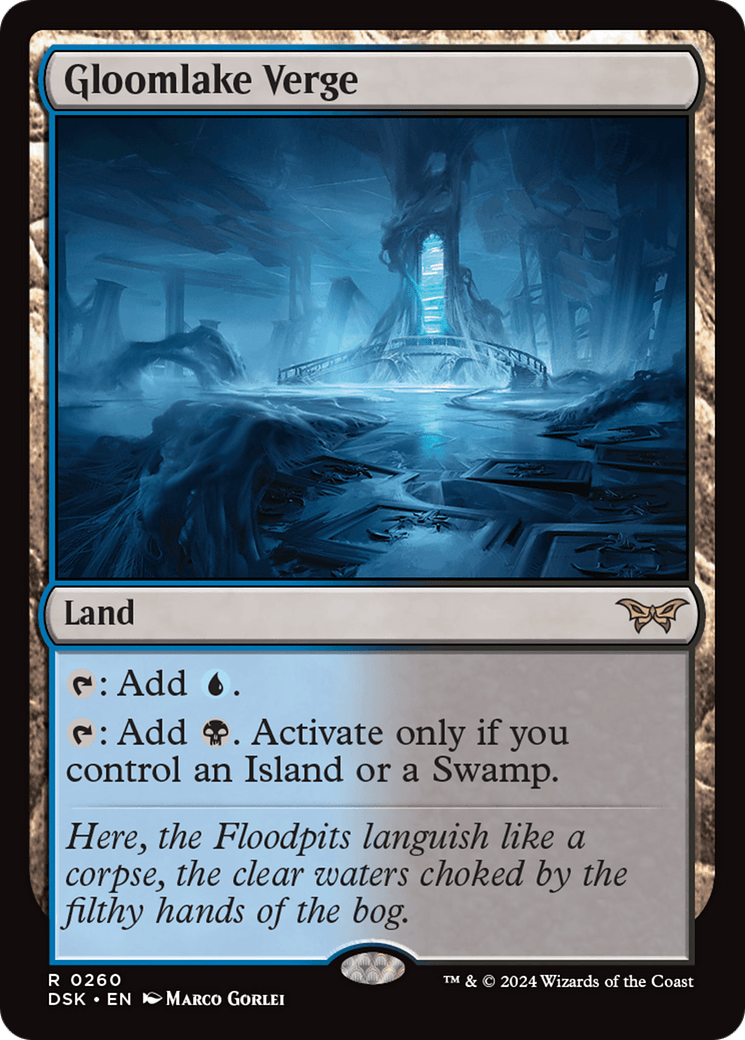
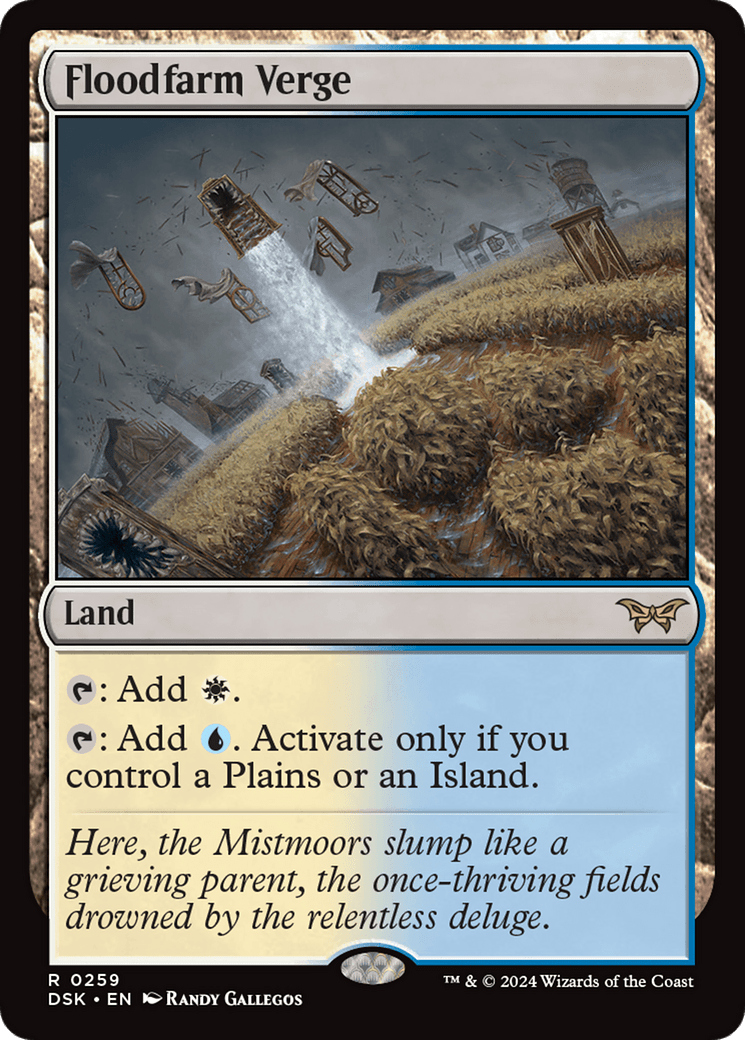
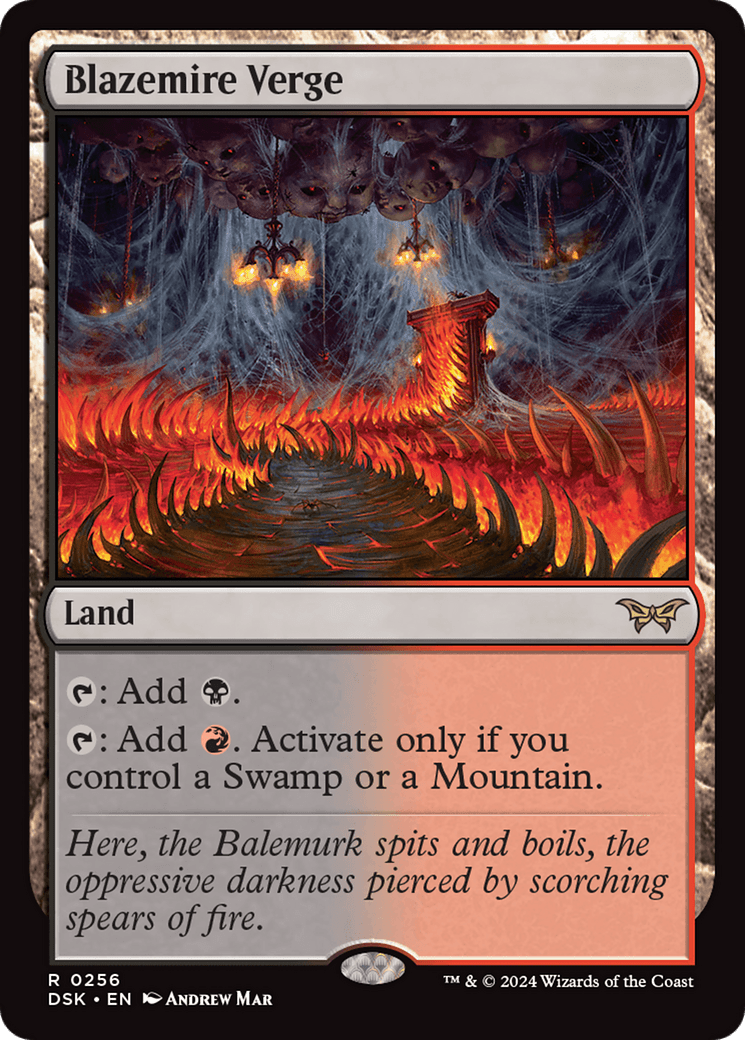
Floodfarm Verge, Gloomlake Verge, Blazemire Verge, Thornspire Verge, and Hushwood Verge seem very, very powerful. I will say I’m a little surprised these weren’t in Bloomburrow instead of Duskmourn, with Fabled Passage replacing these in the latter since Fabled Passage fits the theme of Duskmourn more and also supports its mechanics through delirium, but I forgive them because of how amazing the art of this land cycle is. These cards raise two interesting questions though. The first is, will there be twenty of these? Other land cycles don’t care about what color appears first in the land cycles, and for these it’s pivotal. Gruul Prowess, for example, can run a Thornspire Verge, but can’t run a land with green as the primary color and red as the conditional color. The second is, if there are only going to be the traditional 10 land pairs, does this make deckbuilding too restrictive post-rotation? Let’s say you’re building a Jund deck. The options you can pick from are a black/red land, black/green land, and a red/green land. You will always have the unconditional black from the first two land options, so it’s a lot easier to build around always having black and you’re unincentivized to run many green cards because it’s the secondary or conditional color on those lands. Therefore, you’re strongarmed into black being your pivot color if you want an efficient 3 color mana base in Jund. I’m interested to see where Wizards of the Coast will go with this, though I’m doubtful that they’ll dive into the reversed allied/enemy color pairs any time soon.
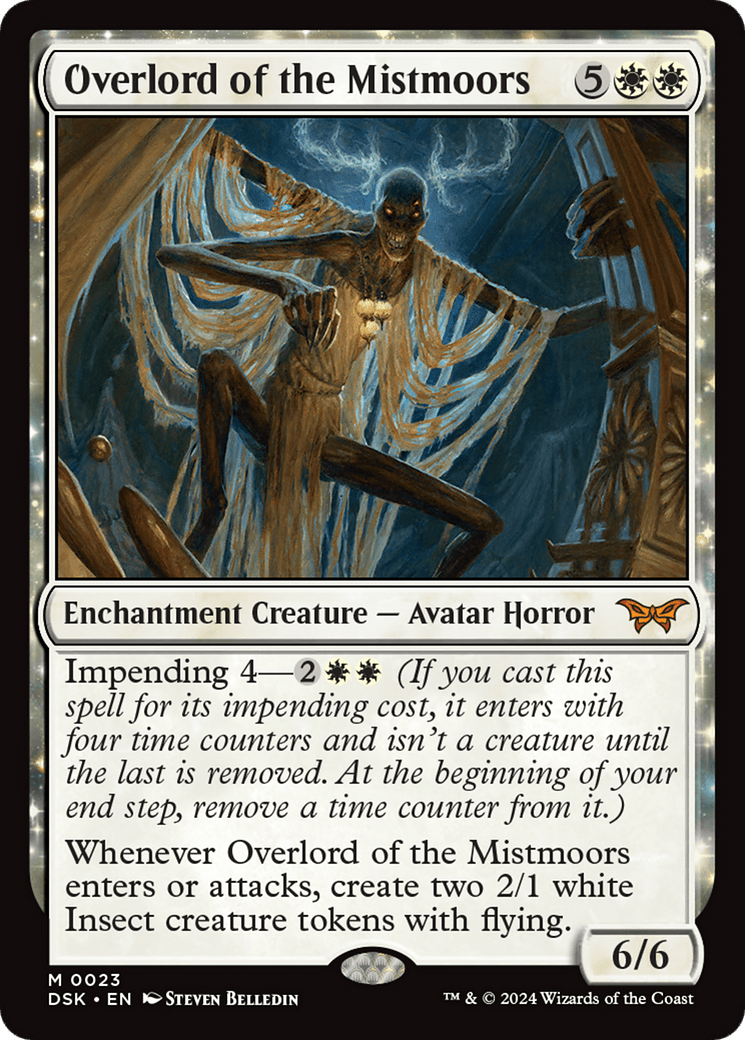
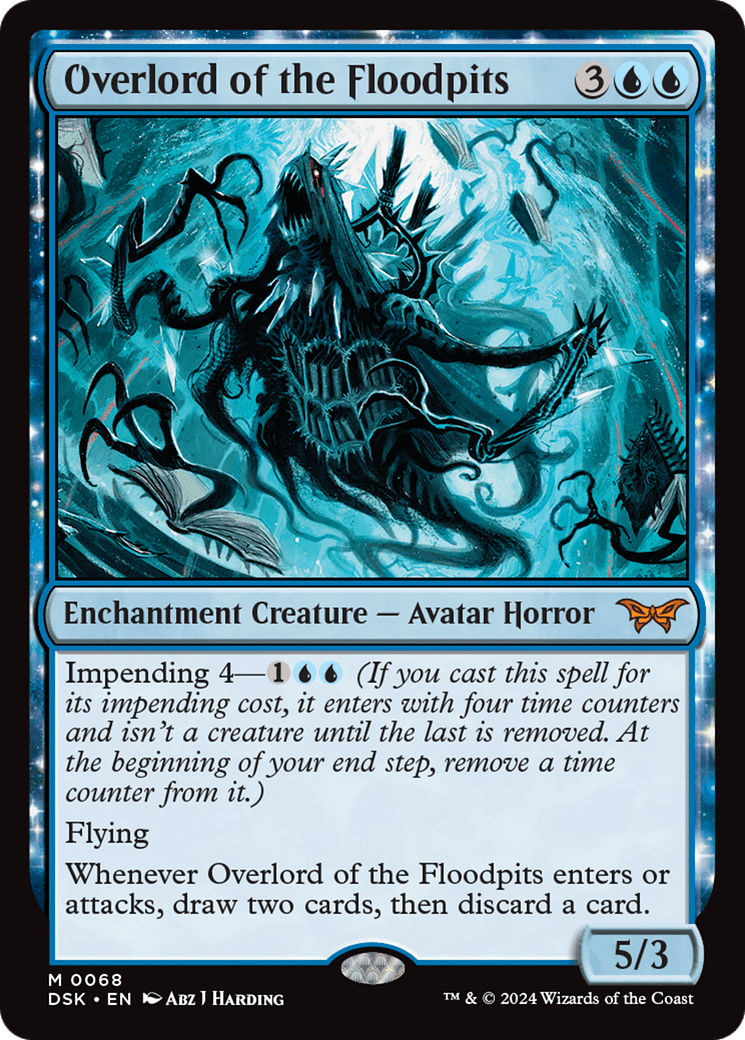
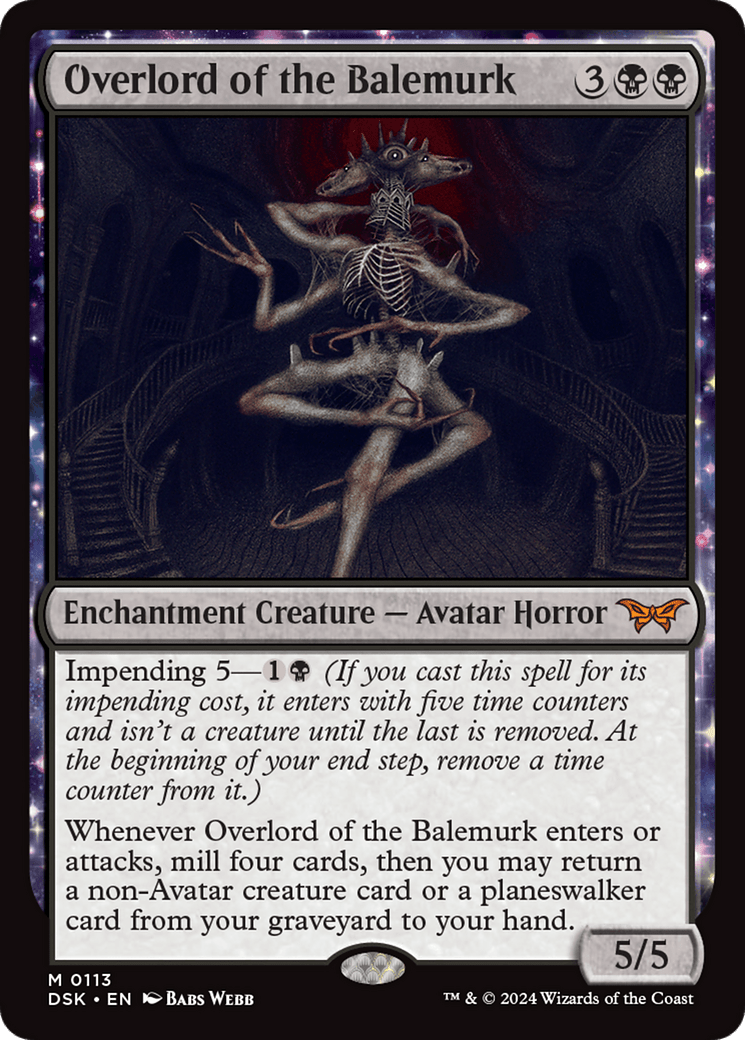
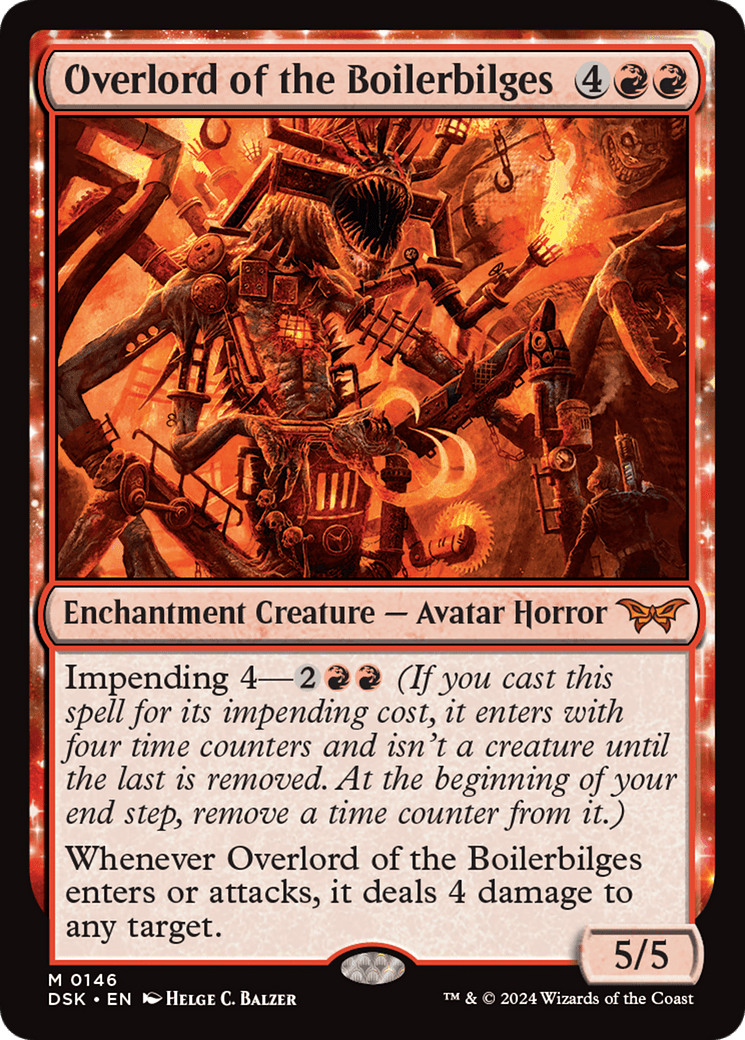
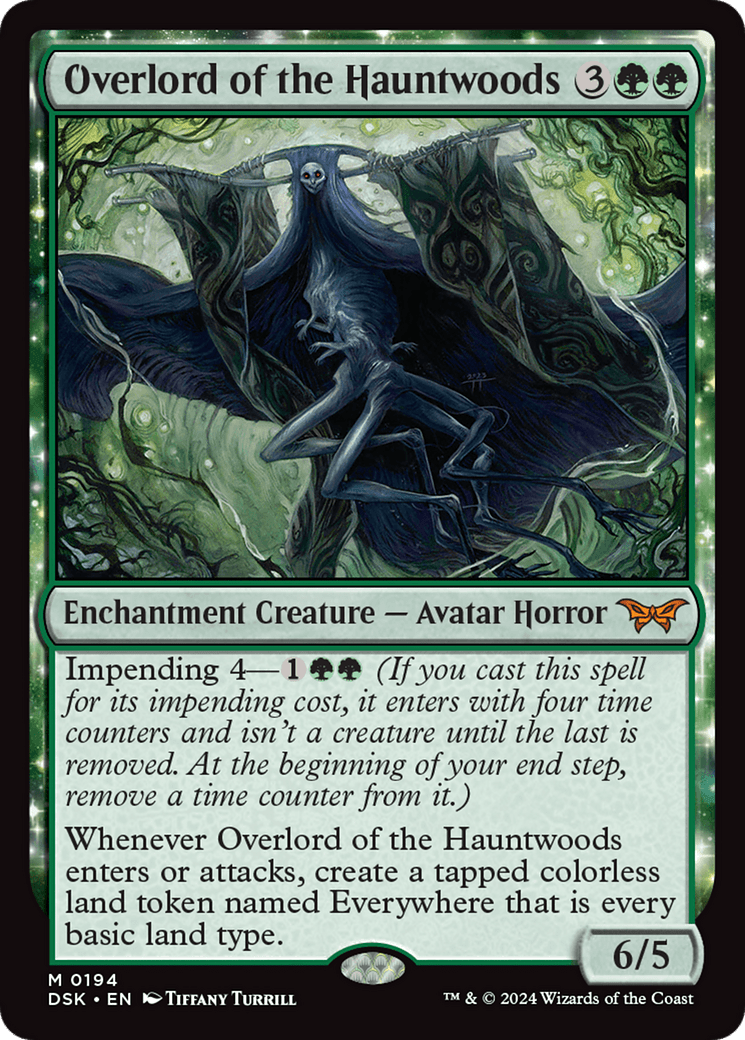
The Overlord / impending cycle is really powerful, but some are more geared towards Standard than others. As an early estimation of power, here’s my power rankings for the Overlords:
While some of these may belong in new decks that I’m not including in my prerelease evaluation, it’s easy to see where some of these slot in. Overlord of the Hauntwoods is a slam dunk Domain Ramp card. It creates the Everywhere token that instantly enables full domain and even triggers Up the Beanstalk even when you cast it with its impending cost. It’s the easiest lock for the most-played Overlord of the set. My favorite by far though is Overlord of the Balemurk. I’ve always been partial to graveyard strategies, and this scratches that itch more than I could have ever hoped for. Cache Grab-esque effect with two card types for delirium that turns into a huge beater? I really couldn’t ask for more. While it has a longer impending timer than the other Overlords, it also has a cheaper impending cost than the rest of its cohort. Overlord of the Mistmoors is just a new-age Grave Titan, and I can’t imagine it doesn’t see play somewhere. I can’t figure out quite where it belongs yet, though. I feel similarly about Overlord of the Boilerbilges. However, the same can’t be said about Overlord of the Floodpits. While I can conceive of this being slotted in a sideboard for a control mirror, I’m not nearly as excited about it as I am with the others.
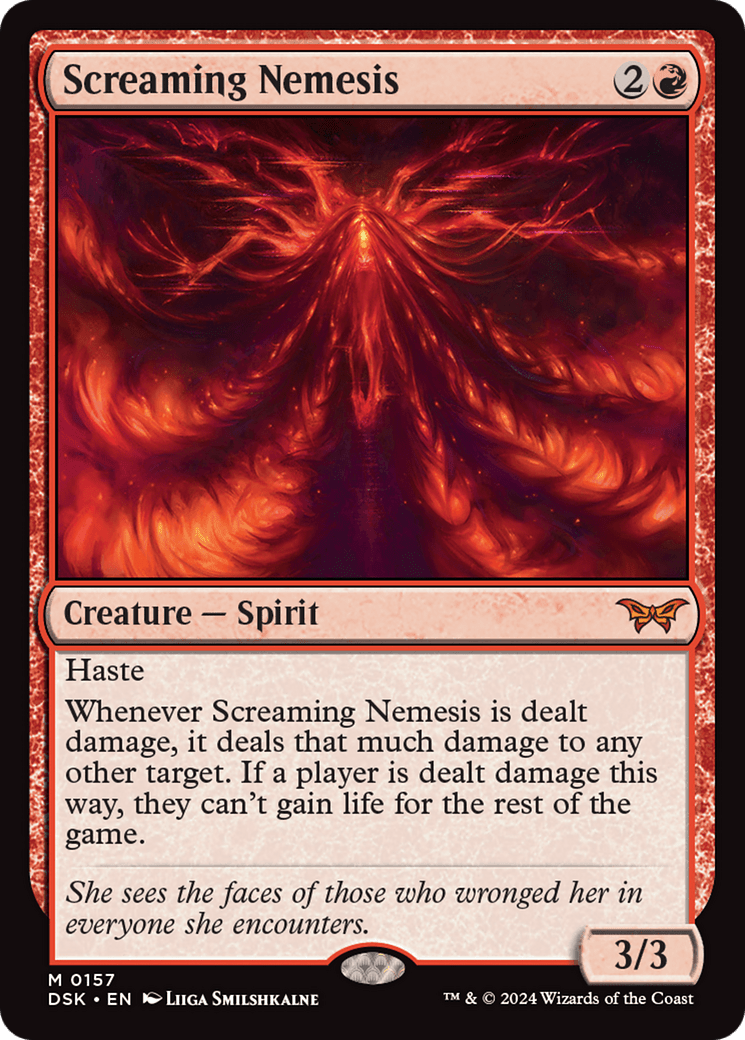
There really doesn’t need to be much of an analysis to see why Screaming Nemesis is an instant staple for Mono Red. There’s so much lifegain in standard currently with Carrot Cake, Lightning Helix, Herd Migration, Virtue of Persistence, Deep-Cavern Bat, Beza, The Bounding Spring, and Atraxa, Grand Unifier seeing plenty of meta play. There’s even more out there seeing fringe play, like Orzhov Lifegain decks (especially with Leyline of Hope on the horizon). Screaming Nemesis is an easy win for aggressive red strategies.
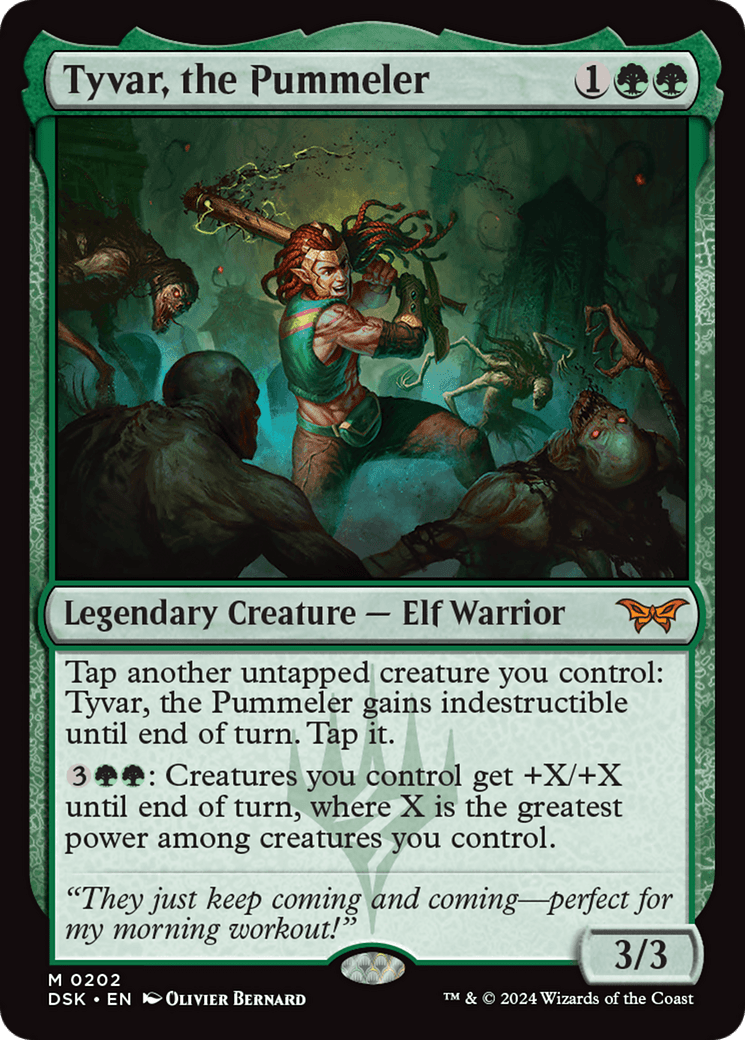
Tyvar, the Pummeler is here just as a footnote for November. I believe in the ability of Elves to be a meta deck once Llanowar Elves is legal. Tyvar is a crazy beater that can overrun games single-handedly. Don’t forget about him once Foundations releases!
Now, it’s time for the hot takes. The cards that I disagree with almost everybody about. The cards that everyone says are going to be problematic or amazing in standard that I just can’t see being as good as they’re hyped up to be in the long run.
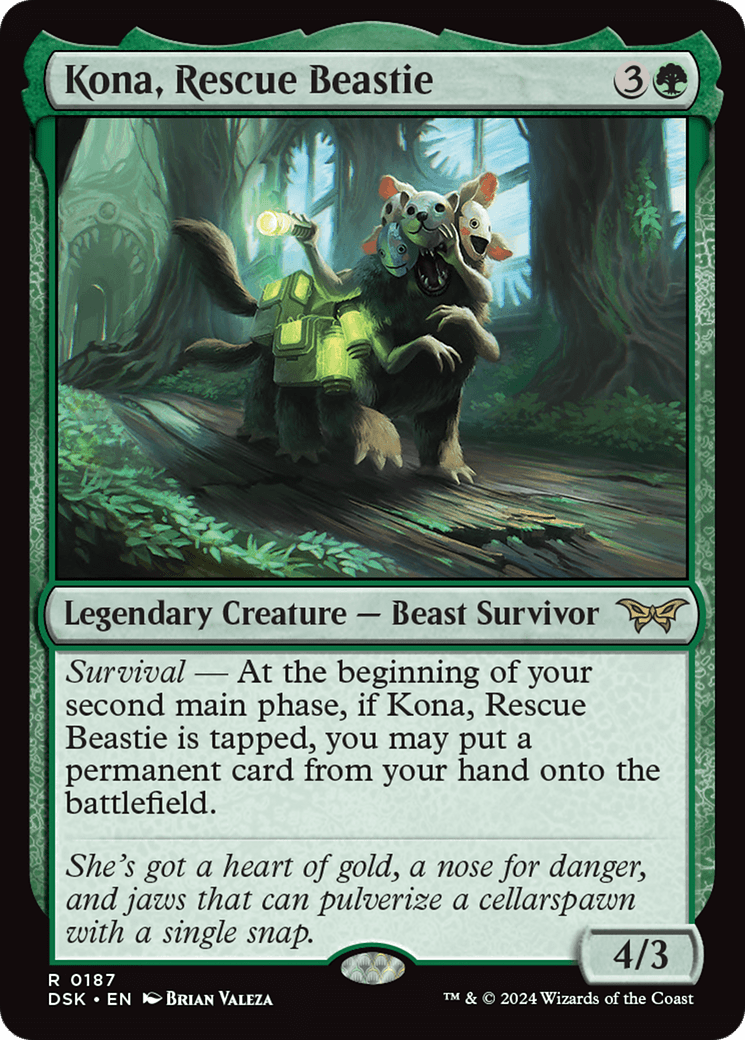
First up is Kona, Rescue Beastie. It breaks my heart to say this since I was one of the first people to bring up the interaction between Kona and Relic of Legends and be excited about it in my Naya Legends deck, but it’s really too predictable. Once you’ve played against the oft-discussed combo with this and Omniscience (being reprinted in Foundations), you know when to hold up interaction, you know that this deck folds to hand disruption, and you’ll have a multitude of sideboard options against this. I think this deck can make some waves potentially, but I don’t think it has much of a shelf life once people know what to expect with this very linear game plan.
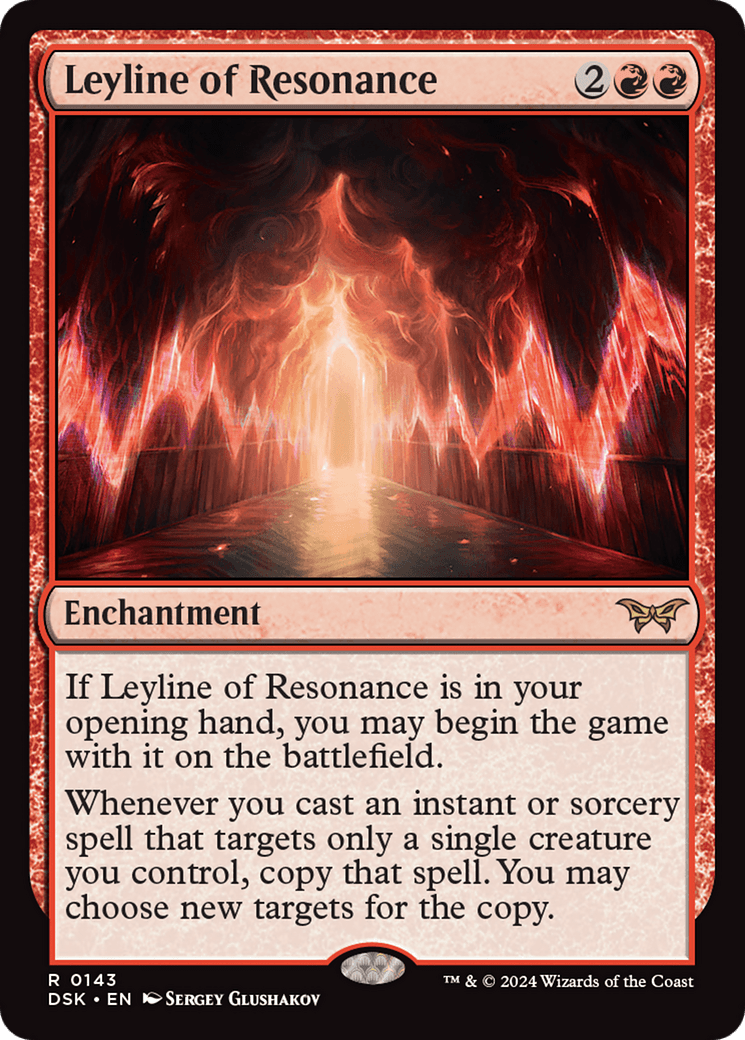
Don’t get me wrong, Leyline of Resonance is amazing. It’s easily the best new Leyline of the cycle, and it’s certainly very playable. But, the reaction and fear-mongering around this card are so unjustified and unfortunate. I’ve seen and heard so many people talk to me about how this card is going to “break” Standard. I’ve seen and heard so many people talk about how this card is going to be banned. I just don’t agree. I’m writing this during the Streamer Early Access Event for Magic the Gathering Arena, and I just know I’ll see 20 clickbait thumbnails and titles with “TURN TWO KILL IN STANDARD?” within the next few days. Yesterday my roommate came up to me and said, “Have you seen the new turn 2 kill? I think Standard might be dead.”. It’s getting out of hand. Not only does this card require the stars to align for you to kill on turn 2, you need to rely on your opponent’s hand to also align to have no interaction in an environment rich with amazing 1-mana removal spells. The meta can account for this deck if it becomes good, especially in bo3. That being said, I feel bad for the bo1 Arena grinders, but they’ll have to come to the bo3 light eventually.
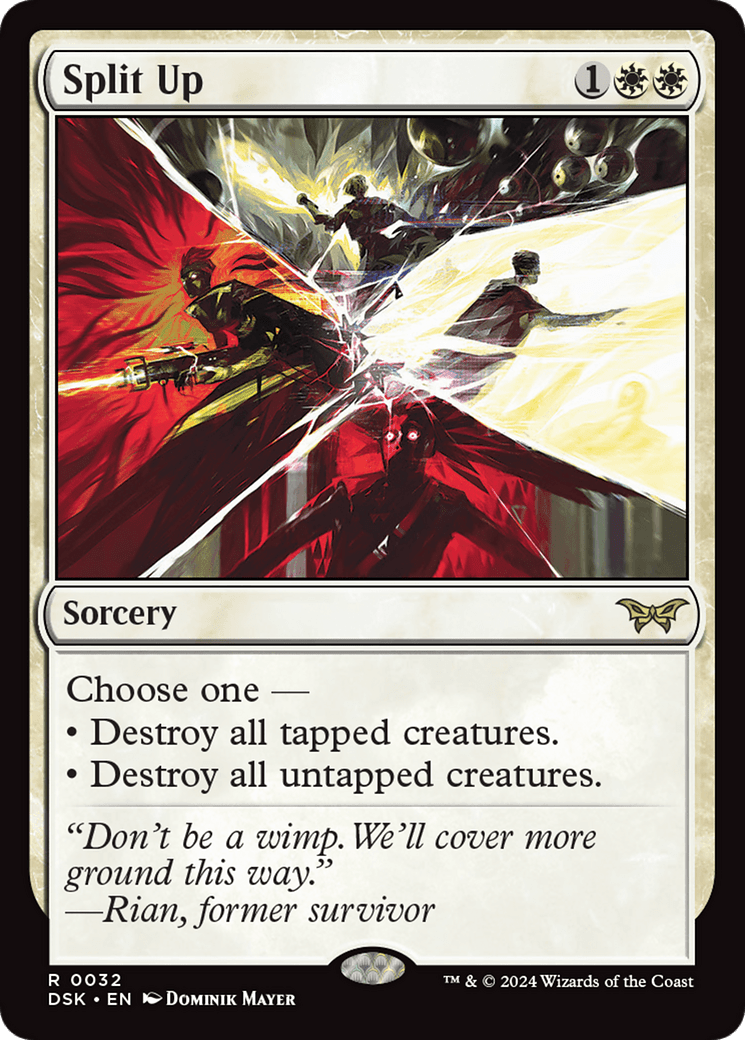
I genuinely feel like I’m insane when I see discussions around Split Up. I don’t understand what everyone is losing their minds about when it comes to this card. Many people whose opinions I respect (and certainly, those whose opinions I don’t respect as well) have all stated that this card is amazing in multiple formats, and I seem to be one of the only ones standing against consensus. I could totally eat my words here, but I can’t think of many situations where I want to run this card over Temporary Lockdown. You will almost always be missing the creatures they played most recently on curve since they’ll be untapped, which, in other words, probably means you’ll be missing their biggest threats. I seriously think I must have a giant blind spot when it comes to Split Up. I’ve never disagreed with consensus as much as I have with this.
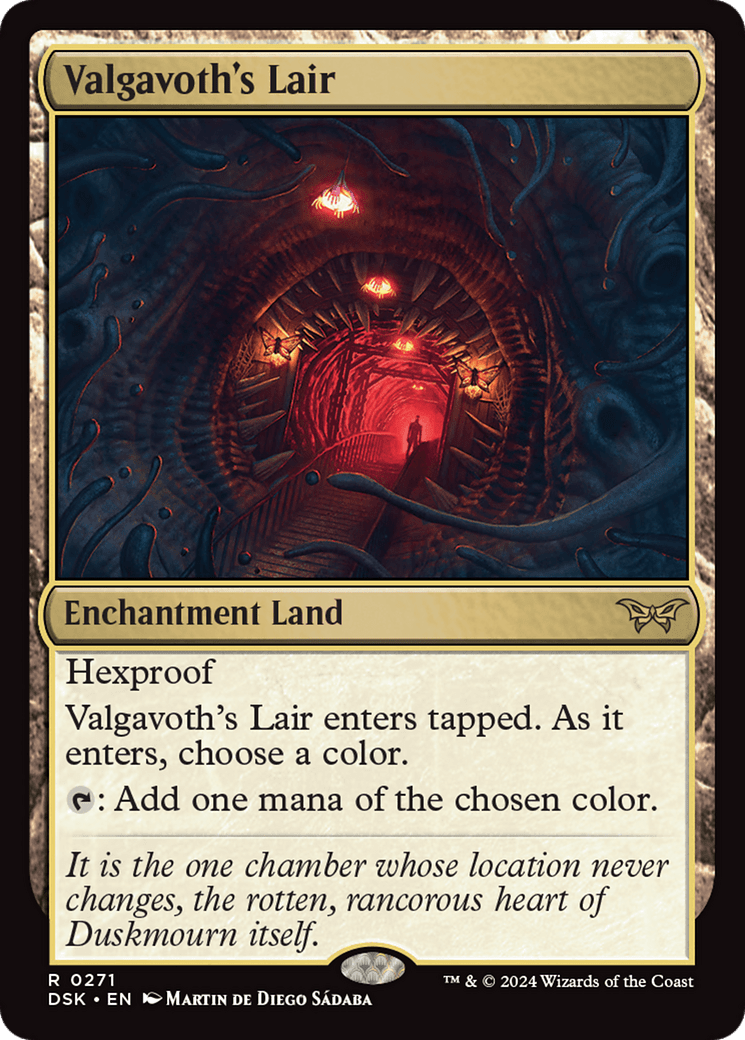
This is not a good card. While I do think it could be relevant for delirium decks, I don’t think it could ever pan out that way at a competitive level. There are far more playable enchantments in a controlling delirium deck (which is likely where this could see play, if ever) than artifacts. I would genuinely rather run Scene of the Crime over this. Valgavoth’s Lair is not good via consensus, but there are a lot of people out there saying that this is good in Standard. I just cannot in good faith ever agree with that. The protection it provides via hexproof doesn’t even protect against the most popular sideboard artifact/enchantment removal option, Pick Your Poison.
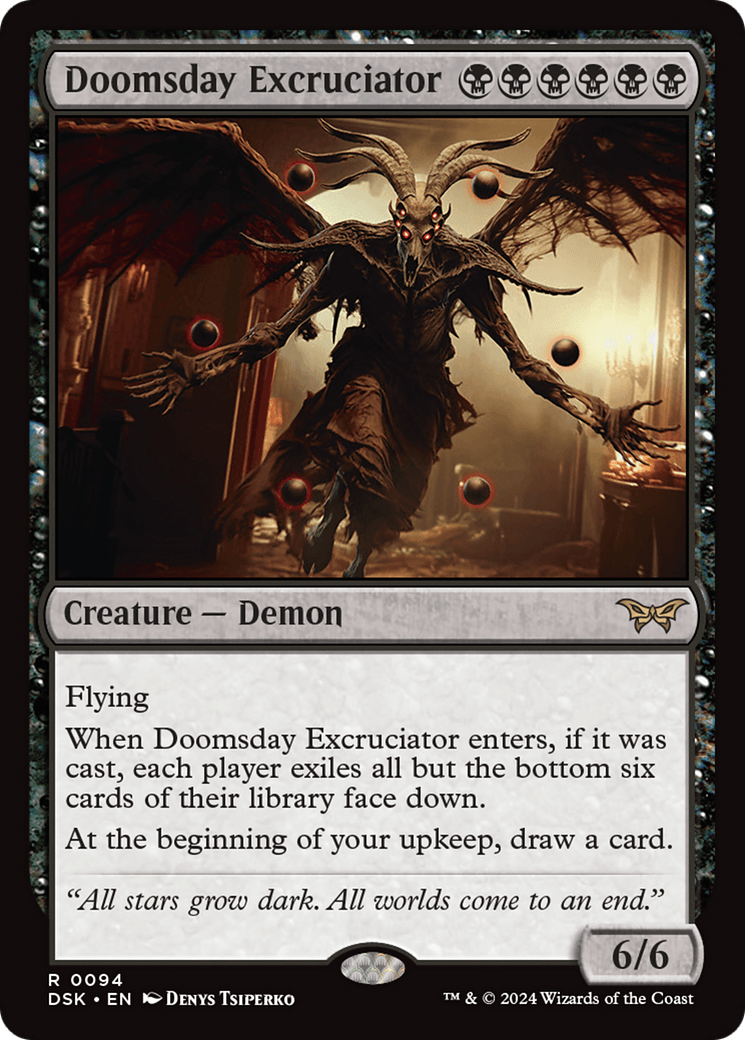
I don’t think this card justifies me giving it a reason why it won’t see play. It’s uncastable, and even if you did cast it, why? Why would you cast it? It requires such an opportunity cost in deck building when it comes to setting up casting this (likely involving looting it away and casting Reenact the Crime), and then you cast a card that isn’t even that good. I can picture a world where you jump through all of those hoops, activate Jace, the Perfected Mind, and mill out your opponent, but I’d rather just run a better card. Especially when it folds to any graveyard hate (which will likely be revived in sideboards after Duskmourn if it’s as impactful of a set as I expect it to be).
While we’re at it, let’s reflect on my Bloomburrow review, starting with the bad takes:
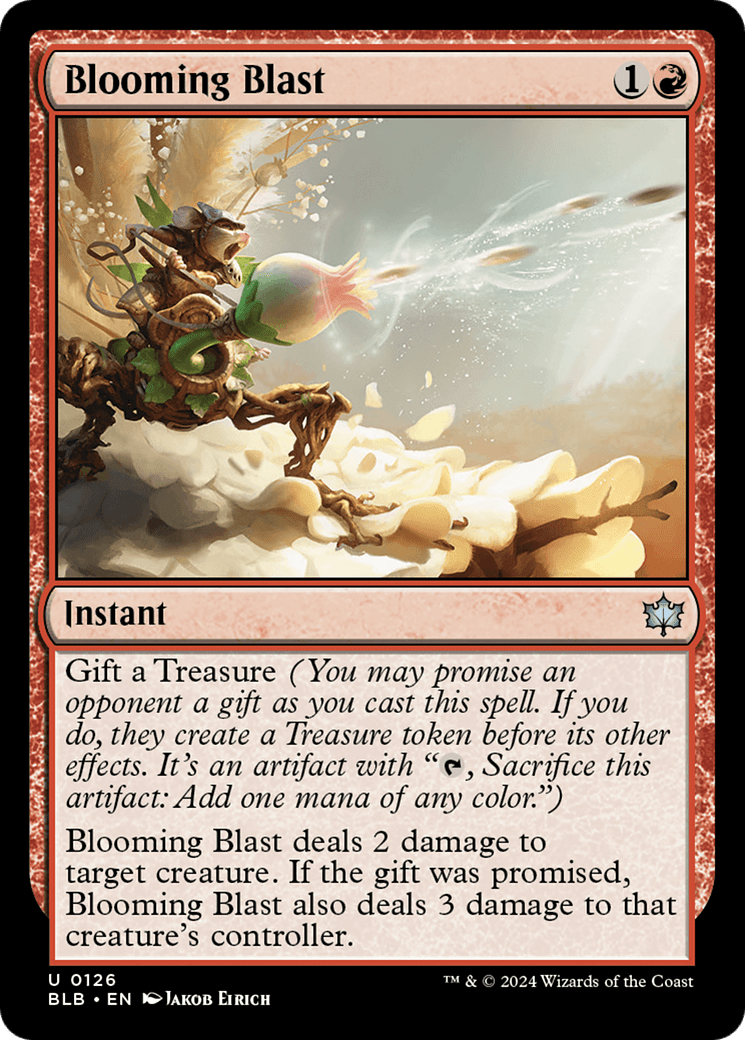
While Blooming Blast does see some sideboard play in the Mono Red or Gruul mirror, it wasn’t as impactful as I thought it would be. I wanted it to be a massive standard staple for aggressive red strategies, and I’m still holding out hope. Sadly, that’s (so far) been completely unrealized. 3 toughness creatures are the current beaters of choice for standard, and this doesn’t do the trick. Luckily for me, this was my only poorly-aged take. 9/10 takes isn’t too bad.
Now, it’s time for the great takes:
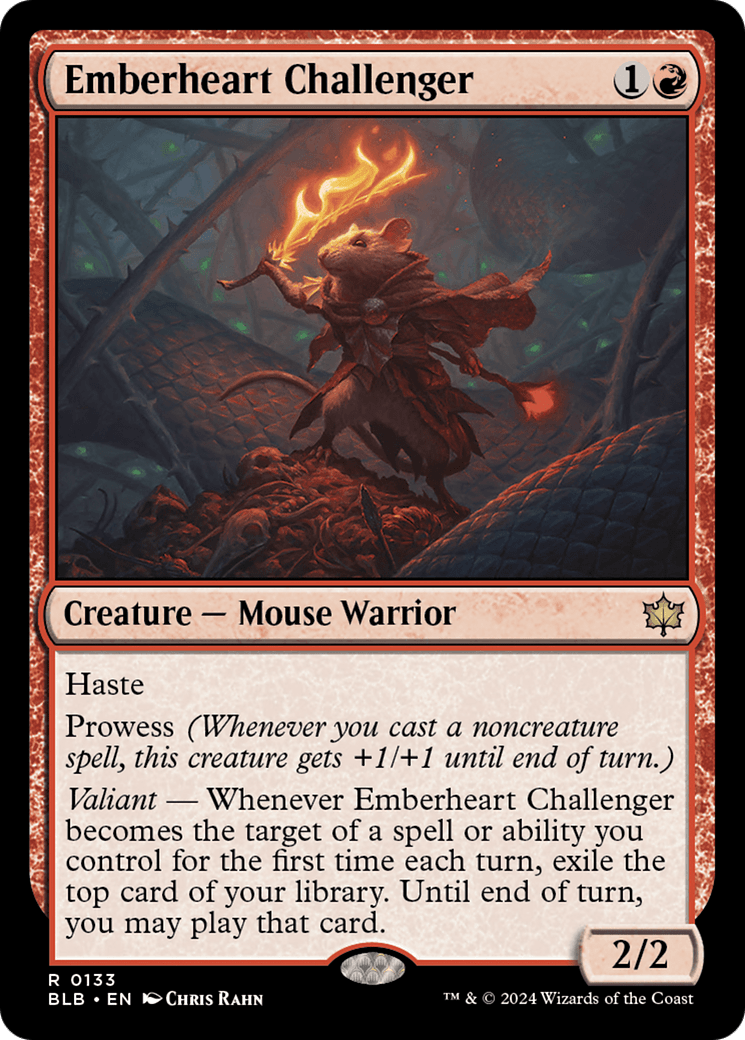
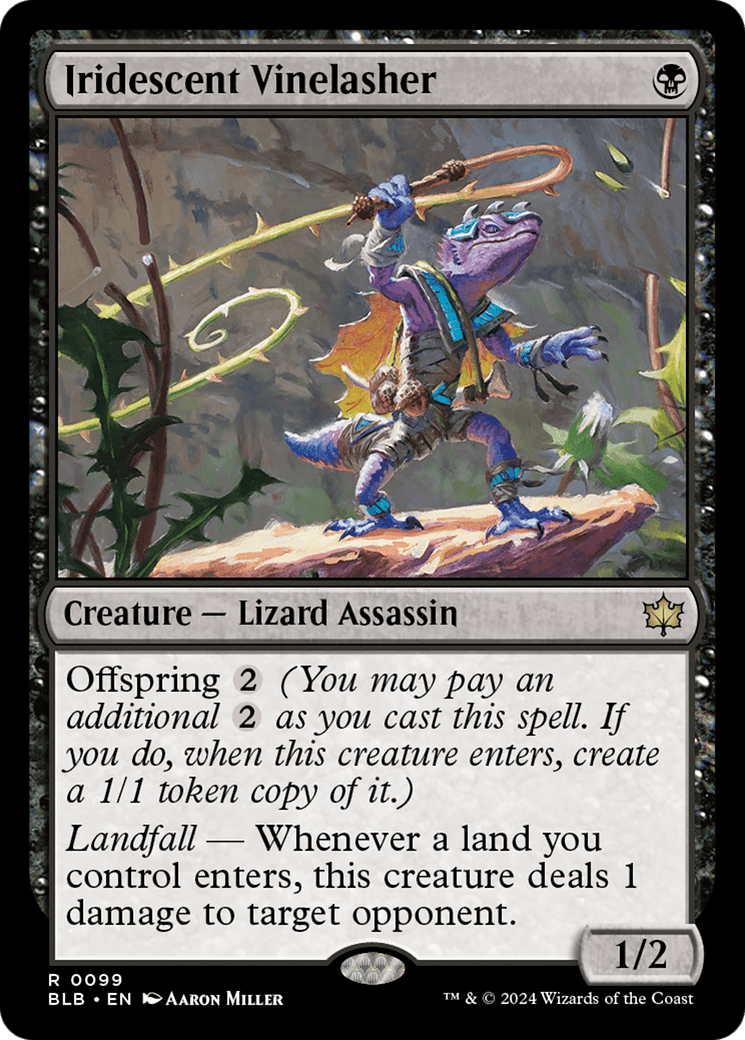
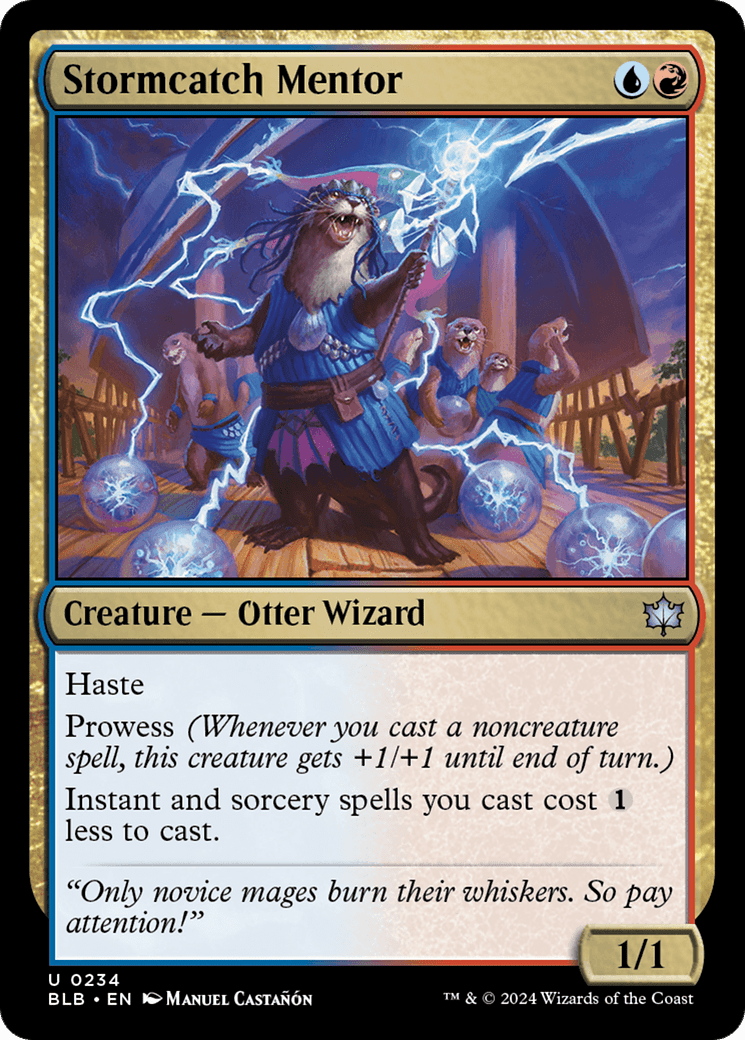
I hit the nail on the head completely with Emberheart Challenger and Iridescent Vinelasher. As I predicted, the Rakdos Lizards package was great and has seen tons of competitive play, and my brief, strong praise of Emberheart Challenger was spot-on. My initial statements on Stormcatch Mentor still ring true, with it only seeing play as a budget version of other 2-drops with haste after a brief period of testing where people discovered that it’s not strong enough to see high-level play.
My best take, if we’re measuring by the amount of disagreement I received when I had the take, is that Beza, the Bounding Spring is better than Sheoldred, the Apocalypse in Standard. I received a TON of blowback when I made that statement and I was completely vindicated. Currently, according to MTGGoldfish, Beza is the 13th most played card in Standard with a 26% playrate, while Sheoldred is the 25th most played card in Standard with a 22% playrate. There is some bias in viewing the data this way, to be sure, but considering nobody agreed that Beza would be even close to Sheoldred, I feel confident that my prediction was correct.
I’m hoping to be similarly vindicated with a card like Fear of Missing Out when it comes to Duskmourn, but only time will tell. If you’re as excited as I am about Standard, I recommend giving my Twitter a follow as well as my Moxfield where I’m constantly brewing up new decks. Thank you for reading my article until the end! I hope to write another one for the next set, and if you follow my Twitter you’ll see me filling out this Foundations bingo card I made!
